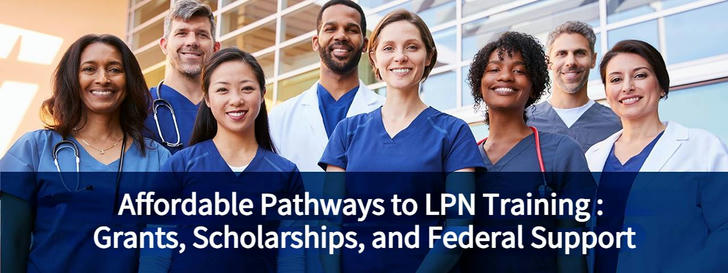Affordable Pathways to LPN Training in the U.S.: Grants, Scholarships, and Federal Support
Introduction: Making LPN Training More Accessible
Becoming a licensed practical nurse (LPN) is a practical and rewarding entry point into the healthcare field. However, tuition, books, and clinical fees can be a barrier for many prospective students. Fortunately, there are many public and nonprofit aid programs in the United States that can help ease the financial burden. These programs include the Federal Student Aid Program (FAFSA), LPN-specific scholarships and grants, state-funded nursing support, initiatives from organizations like the American Association of Colleges of Nursing (AACN), and subsidized training through community colleges and workforce development programs. Together, these options create a more affordable path to LPN training.

1. Federal Student Aid: Start with FAFSA
The first step to accessing most financial aid opportunities is to complete the Federal Application for Student Aid (FAFSA). This federal tool determines if you qualify for financial aid such as:
Pell Grants (up to $7,395 per year) – Although traditionally aimed at associate or bachelor’s programs, upcoming federal changes will allow short-term LPN programs (8–15 weeks) to qualify for Pell funding starting July 2026.
Federal Supplemental Educational Opportunity Grant (FSEOG) – For students with exceptional need.
Federal Work-Study Program – Offers part-time jobs to help cover education costs.
Many Licensed Practical Nurse (LPN) programs at accredited schools are eligible for federal aid. It is critical to submit your FAFSA early, as funding is often limited and awarded on a first-come, first-served basis.
2. Scholarships and Grants Specifically for LPN Students
While general federal aid is valuable, there are also nursing-specific scholarships and grants targeted toward LPN candidates:
Nurse Corps Scholarship Program – Covers tuition, fees, books, and offers a living stipend in exchange for service in underserved communities after graduation.
Private scholarships – Many organizations, such as the Foundation of the National Student Nurses' Association, offer scholarships ranging from $1,000 to $5,000 for LPN and nursing students.
Applicants are often evaluated on a combination of financial need, academic merit, and commitment to nursing.
4. Support from the American Association of Colleges of Nursing (AACN)
Although AACN primarily supports BSN and graduate-level nursing students, it still provides valuable resources for LPNs, especially those planning to bridge into RN programs. AACN-affiliated scholarships and partnerships (e.g., with Uniform Advantage) offer merit-based financial support to students at participating schools.
Their website lists nationwide opportunities and also guides LPNs seeking to advance through LPN-to-RN bridge programs, which may be partially funded under federal or private initiatives.
5. State-Subsidized LPN Training Programs
Many states offer LPN training through public colleges and workforce grants. Here are some notable examples:
Minnesota: Schools such as Ridgewater College and Anoka Technical College offer LPN programs funded by the Workforce Innovation and Opportunity Act (WIOA).
Virginia: Southside Virginia Community College offers an LPN program through state grants and scholarships.
Wisconsin: Milwaukee Area Technical College and Western Technical College participate in programs that are employer-sponsored or state-supported and subsistence programs.
New York: NYC Health + Hospitals and the 1199SEIU Training Fund provide guaranteed employment for the Licensed Practical Nurse (LPN) program.
Missouri: Graceland University provides state-funded training for students who wish to work in designated public health agencies after graduation.
Conclusion: A Practical Career Path Within Reach
From federal aid and scholarships to state-funded programs and community college training, a wide variety of options are available to help aspiring nurses get started. The key is to plan ahead—submit the Federal Application for Student Aid (FAFSA), contact your local workforce agencies, and apply for as many nursing-related scholarships as possible. With the right support, LPN training can be completed with little to no out-of-pocket cost, paving the way for a stable and rewarding career in healthcare.
